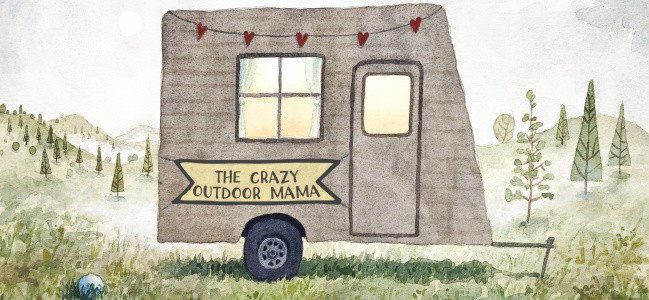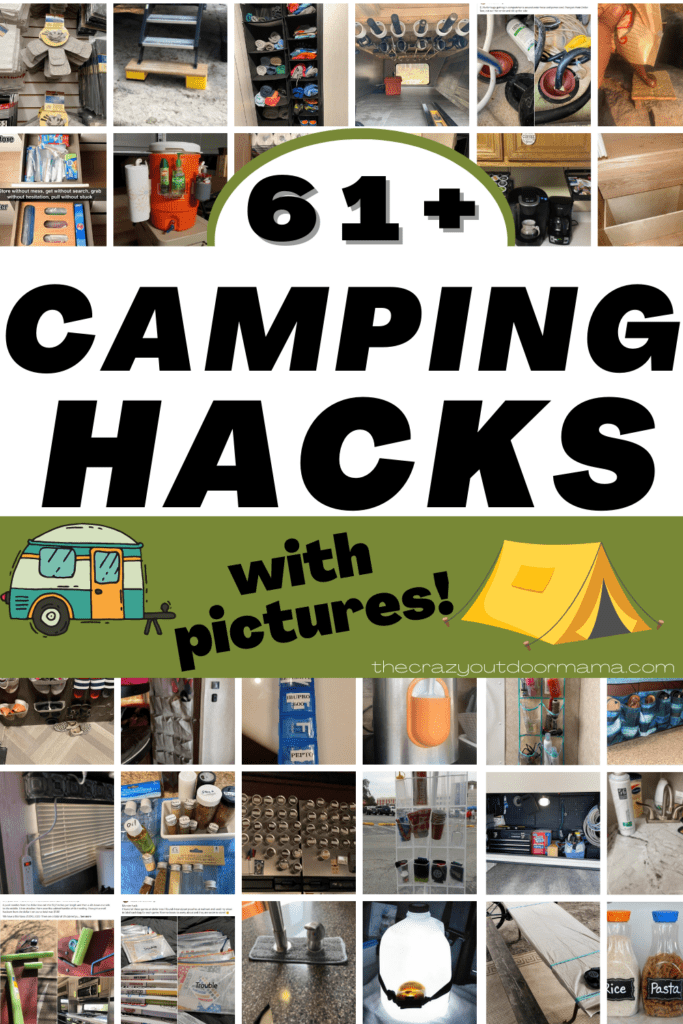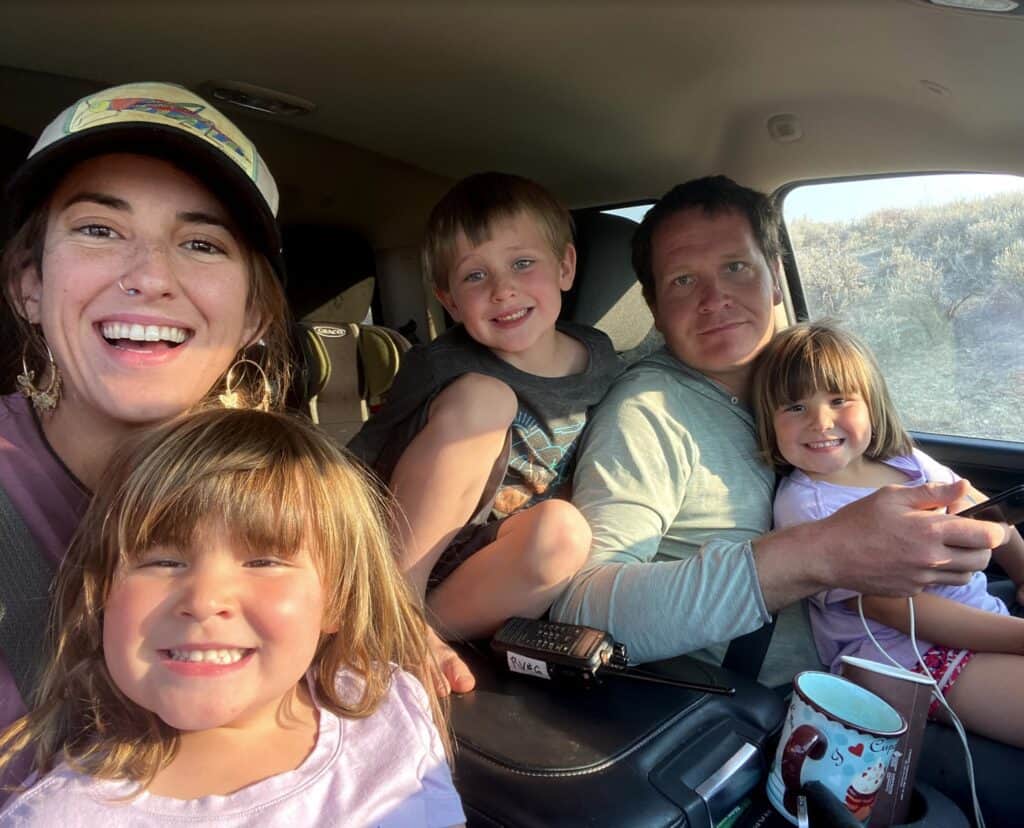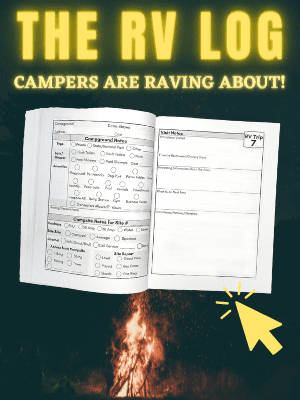“Overlanding” and “off-roading”. Most outdoor adventurers tend to use those terms interchangeably. Do a quick hashtag search for #overlanding and #offroading and you’ll see basically the same thing.
So is there really any difference between the two?
Which is the best option for you and your outdoor adventures?
Can you slap a rooftop tent on your SUV and call yourself an overlander?
In this 5-minute read you’ll get the definitive answer:
- Overlanding vs Offroading
- Pros and cons of each
- Which is right for your lifestyle?
Let’s start with a quick answer to the big question you’re wondering…
Table of Contents
What’s the Difference Between Overlanding vs Off-Roading?
Here it is, explained in a nutshell with a few key phrases and 2 examples.
- Overlanding is about the journey.
- Offroading is about the obstacle.
- Offroading is adrenaline.
- Overlanding is adventure.
- Off-road driving is usually part of an overlanding trip.
- Overland driving may often be on paved roads
- Off-road camping is not necessarily overlanding
- Off-roading is shorter
- Overland routes are longer
- Offroading is a “hike” and overlanding is a “trek”.
These two examples show the differences between an off-road camping trip and an overlanding journey.
Off-roading: You head out for an overnight trip in a remote area close to home. You’ve got a 4WD vehicle and some camping gear. You’ll drive about 35 miles on unmaintained dirt roads with a few technical sections to reach your campsite.
Overlanding: You plan a 2-week road trip through remote areas that takes you hundreds, maybe thousands of miles from home. Your vehicle is your basecamp and carries everything you need to spend days at a time off the grid. The journey takes you on a mix of paved roads and dirt roads with a handful of technical sections.
Get the idea?
So What is Overlanding Anyway?
Overlanding has been nicely defined as self-reliant, vehicle-independent adventure travel over long distances where the journey is the main goal.
Where did it get its start?
Overlanding Origins
Technically, overlanding as an activity has been around as long as people have been exploring — well-before Jeeps came into existence.
Basically anytime some explorer was like… “Hey, what’s beyond those mountains over there? Let’s take a 6-month trip to find out”… they were overlanding.
The pioneers crossing North America in covered wagons were technically overlanders.
*Can’t you just imagine the “extra-adventurous” pioneers showing off their wagons with lift kits, long-travel suspension, and all-terrain wagon wheels?! 🤣
However, “overlanding” as a term originated in Australia and referred to droving livestock across long distances in the outback. The original overlanders had to cut tracks across long distances and through remote areas to drive their livestock to market.
What Is Overlanding Today?
Thankfully, modern overlanding doesn’t usually involve driving cattle or covered wagons. But the principle is the same — traveling long distances in unknown areas in search of adventure.
Modern overlanders rely on rugged vehicles with self-sufficient camping gear. That way no matter where the road (or lack of it) takes them, they’ll have a place to cook and sleep.
Overlanding vs. Offroading – An In-depth Comparison
Let’s take a quick look at some of the finer differences between offroading and overlanding.
The Difference Between Overlanding Vehicles vs. Off-Road Vehicles
Off-roading vehicles are purpose-built to handle specific technical obstacles. Some are made for deep water crossings, rock crawling, Baha-style driving, and other types of rugged terrain.
The main purpose of vehicles designed just for off-roading is getting over obstacles, not supporting life off-grid. So a great off-road vehicle (like the 2-door Jeep Wrangler) may not necessarily have decent cargo or towing capacity.
Many off-road vehicles with heavy modifications are horrible to drive for any length of time on smooth roads.
A Jeep like the one in the picture can conquer some impressive off-road obstacles. But would you want it for a 5,000-mile cross-country trip on paved and unpaved roads? Probably not.
Overland vehicles usually have some off-road capabilities. But since their main purpose is supporting life no matter where you go, they should also have enough cargo capacity to carry everything you need for living — a kitchen to prepare food, tent or camper, food storage, gear storage, etc.
And unlike purely off-road vehicles, overlanding vehicles are all-terrain vehicles that need to handle reliably both on and off road. That’s because an overlanding trip in developed countries may actually involve more total miles on paved roads and smooth dirt roads than technical 4×4 trails.
The Purpose
Purposeful off-roading is for conquering technical trails and obstacles. A great example is the famed Hell’s Revenge trail in Moab, Utah. It’s only about 14 miles long, takes a couple of hours to complete and has a wide range of technical obstacles.
That is pure off-roading. But it could hardly be called overlanding, unless it was part of a much longer trip. And you don’t need a vehicle with off-grid living quarters to tackle Hell’s Revenge or a similar trail like the Rubicon.
The Pan American Highway on the other hand is a true overlanding trip. The purpose of tackling it is to see new places, experience different cultures, and explore other parts of the world.
But not all of it is off-road driving. In fact, nowadays you can drive most of it on paved roads. But most of us would opt for traveling off the beaten path for large sections of it.
You could also do it as a normal “road trip”, staying in hotels and eating in restaurants along the way. But for it to be a true overlanding journey, you’ll need to rely primarily on your vehicles for accomodation and meals.
The Experience
The off-roading experience is focused more around short bursts of adrenaline. Many popular off-roading trails, like the famous Rubicon trail in California, only take a few hours to complete with a handful of technical obstacles.
But the overlanding on the other hand, focuses more on the rewarding experiences and enjoyment you get from the journey as a whole. And it’s a journey that lasts weeks or even months, not just an afternoon.
The Gear
Off-roading generally requires much less gear than overlanding.
Since off-roading gear is focused around getting you safely over obstacles, the main gear you’ll need is:
- An off-road capable vehicle
- Plenty of ground clearance
- Off-road tires
- Usually at least a few 4×4 modifications
- Recovery gear (cables, straps, tow hooks, winch, MaxTrax)
- First aid kit
- Air compressor
Overlanding gear includes everything you need for off-roading, and much more.
- Rooftop tent
- Extra battery and inverter
- Mobile kitchen setup
- Communication and navigation gear
- Food storage
- Possibly an off-road camper or trailer
- Portable toilet
- Extra storage for fuel and water
Check out some of my overlanding gear articles:
- What is Overlanding? Get Ready to Go Overland Camping!
- Top Overlanding Rooftop Tents
- How to Start Overlanding
Pros and Cons of Overlanding
Pros
- Overland camping takes camping to a new level. If you’ve already taken a few road trips and you’re already an avid camper, why not combine the two for a completely new experience.
- See more places. Instead of limiting your view to your neighbor’s tent at a campground, imagine camping someplace new every night and waking up to a different sunrise every morning!
- Find hidden gems off the beaten path. Since overland travel usually involves unpaved roads and out of the way places, you’re more likely to find hidden gems that aren’t on the map. Overland trips are more likely to cross a few places off your camping bucket list.
- Builds character. Executing a successful overland camping trip isn’t for the feint of heart. It takes time to plan and since you’re relying only on your vehicles and yourself, when something goes wrong, your problem solving skills will be put to the test like never before.
Overlanding Cons
- Overlanding is expensive. Reliable offroad vehicles are expensive enough as it is. But when you have to outfit your vehicle with everything you need for living, you’ll need to spend at least several thousand more dollars in just basic gear.
*While the most comfortable overlanding rigs are super expensive, you can do it on a budget as well, albeit not as comfortably. See my Overlanding Kitchen article for some ideas on a budget kitchen setup.
- It takes a lot of time. Outfitting your vehicles and trip planning take a lot of time. And most normal people can’t just take off work for several weeks at a time.
Pros and Cons of Off-Roading
Pros
- Off-roading is a great mini adventure. You don’t need to plan cross-country trips and chances are, there are probably some great 4×4 trails not too far from your home.
- You’ve got a little more flexibility with your vehicle (depending on how far off-road you plan to go). Overlanding requires your rig to be capable and reliable. But since popular off-roading trails are well-traveled and sometimes even close to urban areas, you can have some fun in an old beater 4×4 without worrying about breaking down 100 miles from the nearest person.
- Offroading is comparatively cheaper than overlanding. It doesn’t require as much gear or as much time off work.
- Offroad communities are common. Check around in your area. Chances are you can find some other off-road enthusiasts close by who can give you some tips for local off-roading.
Offroading Cons
- You’re limited by how long you can stay off-grid. Without a lot of specialized equipment, extra fuel and water, and loads of cargo space, you’ll probably be limited to long weekend off-grid trips.
Offroading or Overlanding…Which is Right for You?
So which is the right adventure for you…offroading or overlanding?
- If you already have a reliable 4WD vehicle, at least $10,000 – 20,000 extra to spend on gear and several weeks of vacation time a year — take an opic overlanding trip.
- If you have limited family obligations and can take your work anywhere — why not try overlanding?
- If you have several kids and a normal 9-5 career — it’s probably best to stick to off-roading adventures (unless you’re ready for a BIG lifestyle change).
The allure of overlanding is strong, but realistically a true overlanding adventure is not feasible for most people. It takes a very special set of circumstances to be able to pull it off.
Although an overlanding trip may not be something you could do often, why not add it to your bucket list as a once in a lifetime experience you’ll plan to take. And if you only plan on taking a true overland trip once, there are cheaper options than buying and outfitting a rig.
Check out these companies that offer outfitted overland rig rentals and overlanding tours.
And fortunately, weekend offroading, boondocking, and off-road camping (micro overlanding) is within most people’s reach.
The Best Option for Most…MICRO OVERLANDING
Micro-overlanding combines the best of off-roading, car camping, road-tripping, and overlanding into one package that most people can enjoy.
Micro overlanding is also a great way to get your feet wet with longer off-road adventures to see if it’s something you can realistically invest more time and money in.
All you really need to get started is a reliable vehicle with 4WD or AWD and above average ground clearance and your camping gear. Remember, overlanding is more about the adventure and less about the technical obstacles.
- Take a 5 day trip to try and drive across your state while staying on as many dirt roads as possible and boondocking along the way.
- Take a back road road trip and challenge yourself to see how many days you can make it without having to stop at a store or gas station.
Want to give it a try?
Check out some of my other overlanding articles to see what you need to get started.
- How to Start Overlanding | Overland Camping for Beginners
- 7 Best Off Road Pop Up Campers
- 10 Best off road camper trailers under $10,000 | Video Tours!
- Cassette Toilets for RVs & Campers | Get All the Dirty Details
- Solar Eclipse 2024 Kids Printable Activity Pack! - April 8, 2024
- 11 RV Bathroom Makeovers to Inspire You! - April 7, 2024
- 13 Dreamy Hammock Camping Set Up Ideas + Pics - February 22, 2024




